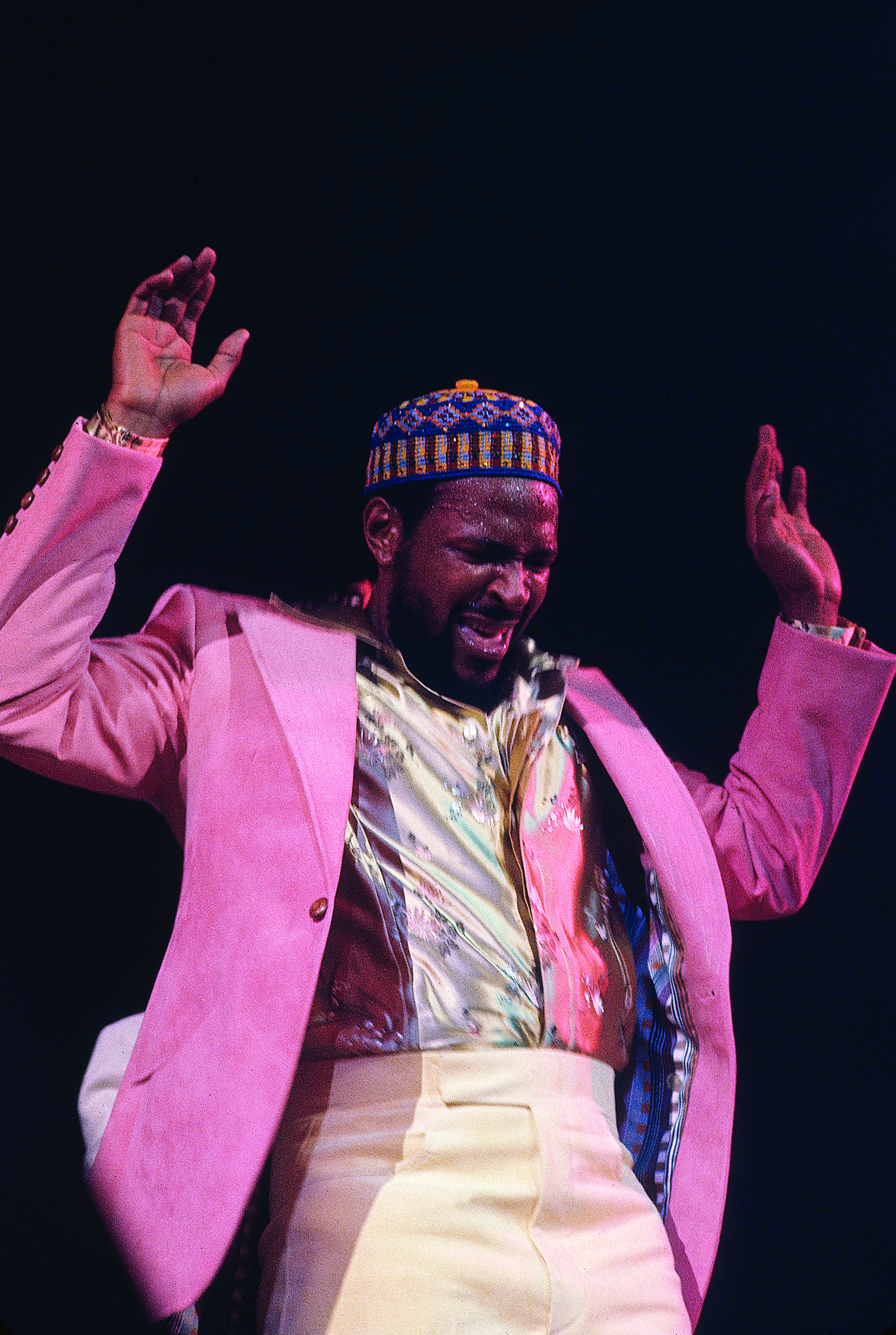“Spirit in the Dark” Opens Friday at the National Museum of African American History and Culture

Credit: Johnson Publishing Company Archive. Courtesy J. Paul Getty Trust and Smithsonian National Museum of African American History and Culture.
The Smithsonian’s National Museum of African American History and Culture will open its latest exhibition, “Spirit in the Dark: Religion in Black Music, Activism, and Popular Culture,” Nov. 18. Through never-before-seen objects from the museum’s permanent collection, alongside rare photographs and stories featured in Ebony and Jet magazines, the exhibition explores ways in which religion is a part of the cultural fabric of the African American experience. “Spirit in the Dark” will be on view in the Earl W. and Amanda Stafford Center for African American Media Arts (CAAMA) gallery until November 2023.
The exhibition includes photographs of several prominent African Americans, such as Aretha Franklin, Duke Ellington, Marvin Gaye, Angela Davis, Malcolm X, Maya Angelou, Reverend Ike and Jesse Jackson, examining religion’s impact on their lives and the larger Black community. Photographs featured in the exhibition are taken from the recently acquired Johnson Publishing Company archive, which is jointly owned by the museum and the Getty Research Institute. “Spirit in the Dark” showcases 37 framed photographs from the JPC archive and approximately 25 objects from the museum’s collection.
“The role of the Black press has always been pivotal in amplifying African American social and religious life,” said Eric Lewis Williams, museum curator of religion. “Ebony and Jet captured and granted rare insight into the lives of influential Black figures, often revealing how religion has inspired, undergirded, and animated the work of Black artists, activists and changemakers. Through these photographs, objects and the larger stories they represent, we are able to highlight the tremendous diversity within the Black religious experience and bear witness to the role of religion in the Black struggle for human dignity and social equality.”
The exhibition spotlights the presence of religion in African American popular culture through three sections, providing a visual exploration of religion’s shadow in both the sacred and secular through images and artifacts. Each section examines the juxtaposition of various diverse aspects of religion and its space in African American life:
- Blurred Lines: Holy | Profane: This section explores how African American musicians and vocalists blur and transgress the boundaries between the holy and the profane. Artists often transport the power of Black sacred music—historically performed in places of worship—into secular or profane spheres, often fusing modalities and moving back and forth between genres.
- Bearing Witness: Protest | Praise: The second section looks at Black religious leaders who dually ministered to the spiritual needs of their people and led as activists in seasons of social protest. Bearing witness to wrongs and lighting the pathway to freedom, these individuals embodied both priestly and prophetic functions in their contributions to leadership in the struggle for Black liberation.
- Lived Realities: Suffering | Hope: The final section journeys through the creative social and political endeavors of Black artists and activists. They have deployed their faith, talents, and moral visions to expose the harsh realities of the suffering and trauma of Black people in America. These same individuals offered bold visions of Black flourishing and hope, emboldening the oppressed in their fight for justice and social equality.
Visitors also will be able to listen to the sounds of the exhibition with a curated playlist of music by artists included in “Spirit in the Dark” and experience the exhibition virtually with a special companion digital exhibition on the Searchable Museum website.
About the Johnson Publishing Company archive
In 2019, a consortium of five nonprofit organizations, including the Ford Foundation, the Getty Trust, the MacArthur Foundation, the Mellon Foundation, and the Smithsonian Institution, purchased and preserved the JPC archive, which includes more than 4 million prints, negatives, slides, and other photographic formats, as well as 10,000 audiovisual items. The archive is jointly owned by the museum and the Getty Research Institute, which are working together to preserve, catalog and digitize these materials so they can be shared and studied for generations to come.
The archival pigment prints in this exhibition were made in 2022 from the digital files of a legacy collection including 2,800 of the most iconic JPC images, which were digitized between 2007 and 2012 from original prints, slides, negatives, contact sheets, and oversized formats.
About the Center for the Study of African American Religious Life
The museum’s Center for the Study of African American Religious Life organizes public programs and collects religious artifacts that seek to explore religion’s place in African American history and culture and the contemporary roles and needs of faith leaders, faith-based organizations, and African American communities. Through innovative scholarship, the Center expands the ways religion is acknowledged and explored by our nation’s research and cultural institutions. The work of the Center, including the current exhibition, Spirit in the Dark, is generously supported by Lilly Endowment Inc.
About the Earl W. and Amanda Stafford Center for African American Media Arts
The Earl W. and Amanda Stafford Center for African American Media Arts is the Museum’s home of visual culture and innovation. Through its changing exhibitions, public programs, and publications, CAAMA showcases the formation of African American history and culture through media arts, including photography, film, video and audio recordings.
About the National Museum of African American History and Culture
Since opening Sept. 24, 2016, the National Museum of African American History and Culture has welcomed more than 8.5 million in-person visitors and millions more through its digital presence. Occupying a prominent location next to the Washington Monument on the National Mall in Washington, D.C., the nearly 400,000-square-foot museum is the nation’s largest and most comprehensive cultural destination devoted exclusively to exploring, documenting and showcasing the African American story and its impact on American and world history. For more information about the museum, visit nmaahc.si.edu follow @NMAAHC on Twitter, Facebook and Instagram or call Smithsonian information at (202) 633-1000.
# # #
SI-343-2022
